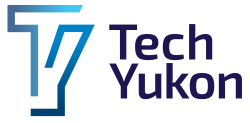Chin Hing Chang, our Program Manager and AccelerateIP certified IP Strategy Consultant hosted an informative introductory session on the topic of Intellectual Property on January 21st.
Here are some key takeaways:
Capturing and Protecting Intellectual Property
- It’s important to capture and document knowledge and processes within a business to prevent loss when employees leave.
- Intangible assets, such as intellectual property, are increasingly valuable in service and software companies.
- IP isn’t limited to inventions but also ideas, unique know-how, software, workflows, business plans, and customer data.
- Besides leveraging patents for protection, the value of IP is also realized through licensing and royalty models.
- e.g. Lego’s licensing agreement with Marvel.
Intellectual Property Strategy and Protection
- Have, and be able to clearly articulate your intellectual property (IP) strategy when raising capital or considering acquisition.
- Understand the value of your company’s IP, how it is used, and how it can be protected.
- Consider the potential for revenue and the potential for litigation when valuing IP.
- When it comes to “Freedom to operate” – the ability to practice without infringing on others’ rights.
- Understand your rights and potential threats in the market.
- Intentional disclosure can also be used to prevent others from patenting certain ideas.
- Chin then outlined the different forms of intellectual property protection rights, including patents, industrial design (a.k.a. design patents), trade secrets, copyrights, and trademarks.
- Document trade secrets properly to be able to sue for damages if they are stolen.
- Trade secrets are indefinite but can be difficult to enforce once disclosed.
- Understand where your customers are located when considering patent registration in different countries.
- Litigation should be the last resort.
- Alternatives include partnering, licensing, acquiring them, or even selling off your patent.
Patenting Strategies and Mobile Applications
Patenting
- For novel, useful, and non-obvious inventions.
- Only valid for 20 years and can be invalidated if prior art exists.
- Is it easy to detect for infringement?
- If not, it’s not worth patenting and better to be kept as a trade secret.
- Is there a commercially valuable choke point?
- If not, and there are other ways to get the same outcomes, your invention may not be necessary in the market and competitors will work around you instead.
- Ensure that IP assignment agreements are in place so that work developed is owned by the company and not the inventors.
Software considerations
- Applications built on existing libraries or open source repositories may not be protectable.
- Code/algorithms are copyright and not patentable.
- Improvements in processes enabled by the software are.
Design Patterns, Trademarks, and Copyright
- Design patents, also known as industrial design, can be valuable for protecting unique inventions, even if they cannot be patented due to disclosure.
- Registration of trademarks and copyright isn’t necessary but helps in ambiguous cases.
- AI-generated content doesn’t qualify for copyright registration.
- Human authorship is necessary.
- There’s value in a strong brand. It can be associated with trust, likability, and even the value of a company.
- e.g. BMW bought Rolls Royce, just for their brand name and logo for $66 million in 1998.
- Approach to intellectual property protection should depend on your company’s goals.
- If you plan to white label your offerings, trademarks & copyright are less of a priority compared to patents.
- If you’re selling directly to consumers, you’ll place more emphasis on trademarks/copyright.

